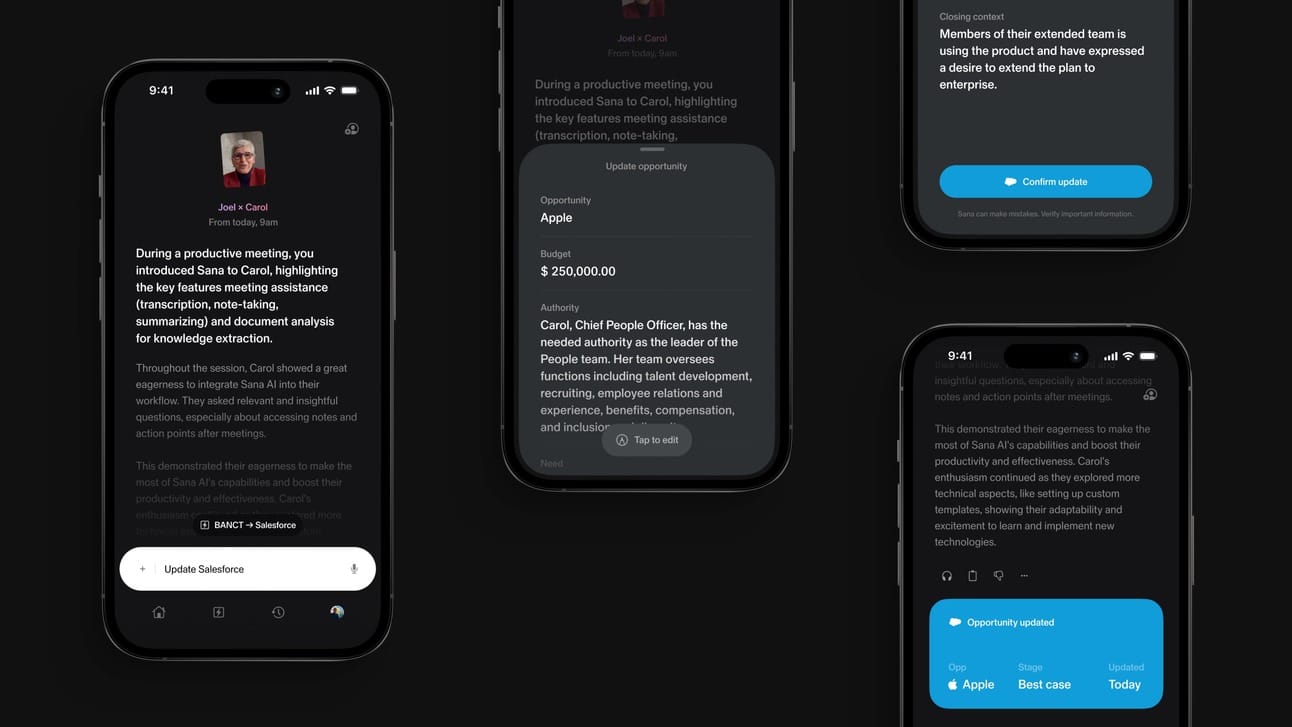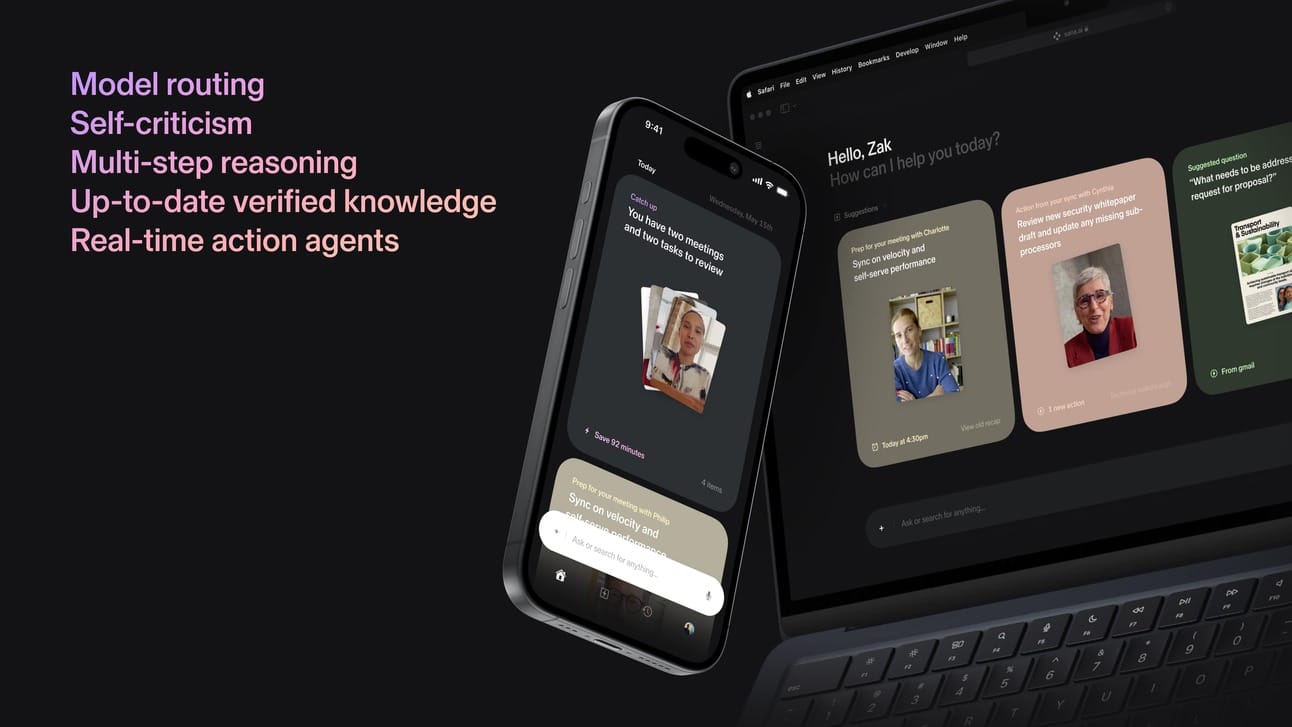- The Deep View
- Posts
- ⚙️ Sana's mission to solve humanity's greatest meta-problem
⚙️ Sana's mission to solve humanity's greatest meta-problem

Good Morning.
Welcome to this special weekend edition of The Deep View, presented in partnership with Sana, whose mission is to unlock knowledge with AI.
Create a solution, not a business
The core of most entrepreneurial advice out there — spouted by the likes of Mark Zuckerberg and Steli Efti — is simple: Don’t attempt to build a company. Build a solution to a problem.
“Don’t fall in love with your business idea,” Efti has said. “Instead, fall in love with the problem you’re trying to solve for your customers, and validate your business idea early on that it is a problem worth solving.”
When it came to starting Sana, founder and CEO Joel Hellermark decided to reach for one of the biggest problems out there. And once he identified it, he set about creating an (AI-powered) solution.
Hellermark’s meta-problem
Hellermark is no stranger to the worlds of computer science and entrepreneurship alike. Three years after teaching himself to code — at the ripe old age of 13 — the Swedish technologist launched his first company, a video recommendation algorithm.
He has since become an appointed AI specialist in Sweden and an Obama Leader, and has gone on to grace the Forbes 30-under-30 list, all recognition he has received for the venture he started back in 2016: Sana.
This brings me back to the idea of problems and solutions.
Hellermark became fascinated by Buckminster Fuller’s idea of meta-problems, the notion that there are certain problems that, once solved, allow you to “solve everything else.” In Hellermark’s mind — and Fuller’s — the greatest meta-problems out there have to do with the dissemination of knowledge.
“Every time we’ve changed access to knowledge, everything else changed for the better,” Hellermark said in a recent keynote address.
Sana, modeled after legendary teams like Bell Labs, was designed to find and create solutions to that meta-problem of knowledge.
Sana’s new approach to knowledge
The core function of the company — which has raised more than $80 million and powers more than 15,000 companies around the world — is focused on capturing and organizing all the knowledge within a given company.
“A lot of the knowledge that we want to access sits scattered across multiple systems,” Hellermark said. Sana’s latest product, Sana AI, is a universal knowledge assistant that lets you chat, search and interact with all of your company's knowledge in one place.
Imagine a tool that syncs up with your Slack, Google Drive, Zoom, email and any company apps or software to automate away repetitive tasks while simultaneously serving up information — as requested by you — from any of these disparate locations, whenever you need it.
Sana AI also transcribes, summarizes, indexes, retrieves and analyzes meetings as if they were any other knowledge asset, making them part of a company’s searchable knowledge base.
And in service to Sana’s mission of vastly increasing the accessibility of its solution to this meta-problem, the company recently made Sana AI available for free.
The solution to the solution
But while this was a good start, it was just the beginning for Hellermark —assistants, he said, can’t use software or solve more complex, multi-step problems; they were good, but they weren’t enough.
Sana recently introduced a new paradigm designed to service those flaws; an agentic solution that powers Sana AI called A-4. Part of this solution incorporates up-to-date knowledge graphs and model routing, which significantly improves the assistant’s performance. The other part involves a new ability for assistants to be more action-oriented.
Sana’s AI assistant can now use software and then reflect on its performance with said software, something Hellermark said boosts performance by a significant amount.
But Sana went a step further: “Now, you have to ask (the agent) to do something,” he said. “But what if you didn’t even have to prompt them? What if we moved more toward supervised automation? The AI assistant will anticipate what you want and then serve that up to you.”
This latest iteration of Sana’s AI assistant will automatically suggest actions to each user, anticipating and acting on their needs to provide meeting summaries, compose emails or search for information before being asked.
“We think this is the worst you’ll ever see these assistants be,” Hellermark said. “This is just the very beginning.”
Sana: The Bell Labs of the 2020s
But there’s a second side of Sana, as well. In addition to providing knowledge assistants, Sana also provides an AI-powered learning platform.
The platform empowers organizations to create, host, manage and analyze all their knowledge and learning initiatives more effectively with AI. For example, organizations can upload existing PDFs and the platform will automatically convert them to interactive courses. Platform admins can ask any question about their organization’s learning performance and the platform will generate a dashboard in response. The learning experience is built around personalization and interactivity.
During the pandemic, Hellermark and his team at Sana developed a specialized learning program to provide “personalized education on Covid-19 treatment and prevention” to 80,000 health workers and 2,000 hospitals.
“What’s interesting about Sana is that it wasn’t really founded on a business idea,” Hellermark said. “I wanted to build a place like Bell Labs, where we would gather the best scientists, designers, engineers and marketers, and we would find intersections across all of these disciplines and build a generation of new tools that could empower people to learn more effectively.”
“It was designed to be my life’s work,” he added, “something that I could spend decades on.”



